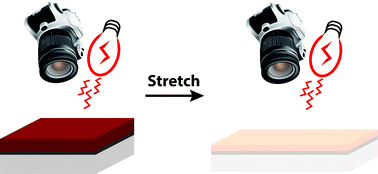Infrared invisibility stickers inspired by cephalopods†
Abstract
The skin morphology of cephalopods endows them with remarkable dynamic camouflage capabilities. Cephalopod skin has therefore served as an inspiration for the design of camouflage devices that function in the visible region of the electromagnetic spectrum. In contrast, despite the importance of infrared signaling and detection for numerous industrial and military applications, there have been fewer attempts to translate the principles underlying cephalopod adaptive coloration to infrared camouflage systems. Herein, we draw inspiration from the structures and proteins found in cephalopod skin to fabricate biomimetic camouflage coatings on transparent and flexible adhesive substrates. The substrates can be deployed on arbitrary surfaces, and we can reversibly modulate their reflectance from the visible to the near infrared regions of the electromagnetic spectrum with a mechanical stimulus. These stickers make it possible to disguise common objects with varied roughnesses and geometries from infrared visualization. Our findings represent a key step towards the development of wearable biomimetic color- and shape-shifting technologies for stealth applications.

- This article is part of the themed collection: Bioelectronics

 Please wait while we load your content...
Please wait while we load your content...